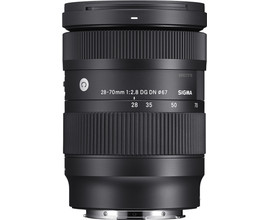
Compare the Sigma 24-70mm f/2.8 to the Sigma 28-70mm f/2.8
Sigma 24-70mm f/2.8 DG DN ART Contemporary Sony E-mount
We don't have the Sigma 24-70mm f/2.8 DG DN ART for Sony at this time.
Sigma 28-70mm f/2.8 DG DN Contemporary Sony E-mount
- You can easily take this lens with you on the go thanks to the compact size and light weight.
- The relatively large maximum aperture of f/2.8 allows you to take sharp photos in dark locations.
- Focus on your subjects quickly and silently with the accurate STM autofocus.
- The lens doesn't have optic image stabilization that reduces motion blur.
Comparison Sigma 24-70mm f/2.8 and Sigma 28-70mm f/2.8
| 24-70mm | 28-70mm | |
|---|---|---|
| Aperture | f/2.8 | f/2.8 |
| Lens type | All-round | All-round |
| Number of aperture blades | 11 | |
| Shortest focal distance | 18cm | 19cm |
| Weight | 829g | 470g |
Usage situation
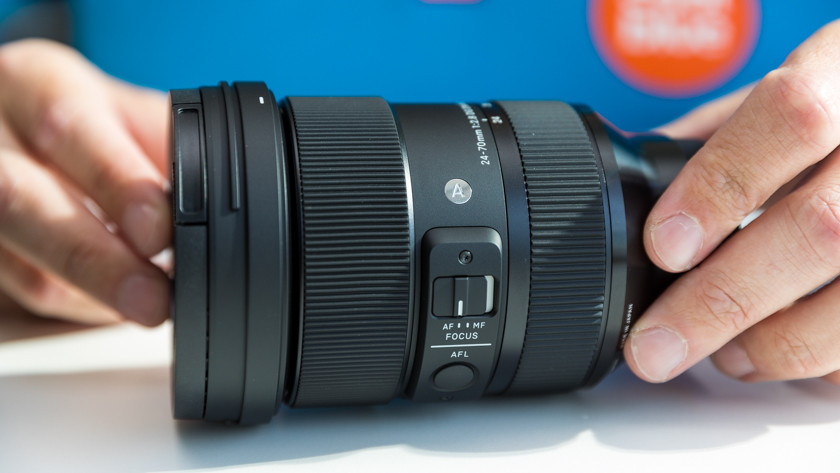
24-70mm: architecture, landscape, and reportage
The 24-70mm lens is suitable for all-round use. The large zoom range allows you to use this lens in various situations. You can easily capture vast landscapes and architecture thanks to the wide viewing angle of 24mm. And you can easily bring subjects closer by using the lens at 70mm. This makes the lens suitable for reportage photography. The lens has a large f/2.8 aperture, so you can take photos in low light. The silent autofocus motor ensures footage without noise.
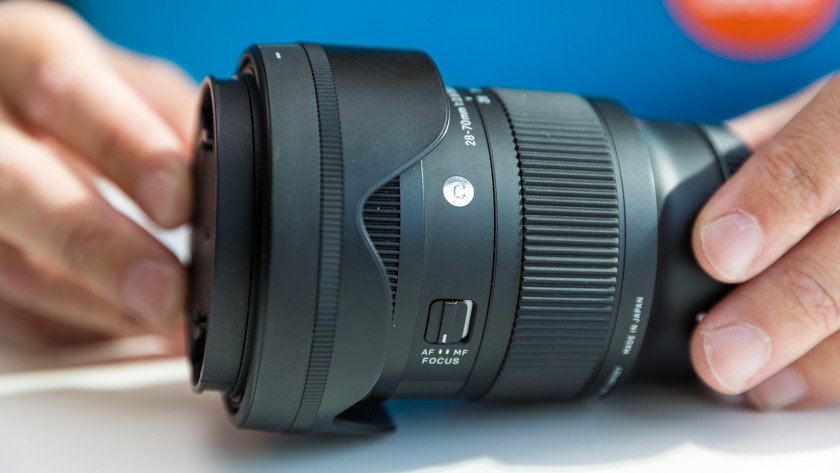
28-70mm: landscape and travel
The zoom range of the 28-70mm is smaller than the range 24-70mm. Because of the smaller image angle at 28mm, the image of this lens is more zoomed in. As a result, it's more difficult to capture tall buildings. You can use the versatile lens for travel and landscape photography. You can easily bring subjects closer with the range of the telephoto lens. Thanks to the maximum f/2.8 aperture, you can easily take photos in dark locations with this lens. The objective has a silent autofocus motor, so you can record without noise.
External features
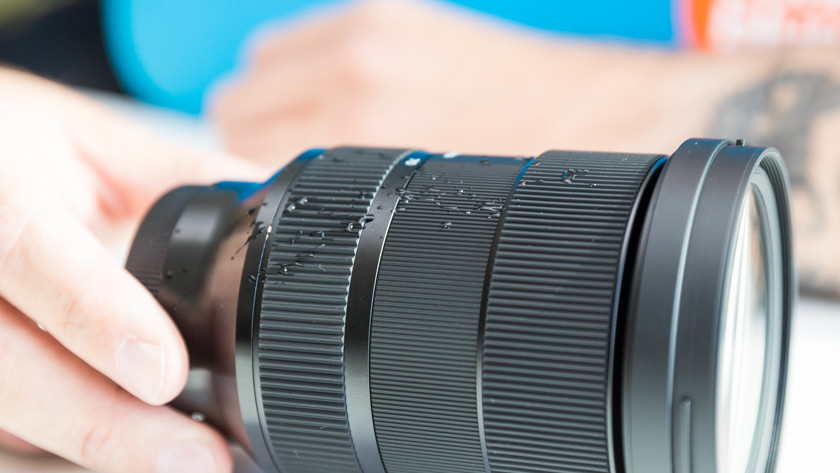
24-70mm: 829g
The 24-70mm lens is a Sigma Art lens. These lenses are made for creatives that have high standards for the image quality and finish of the lens. With a 829g lens, this lens is the heaviest of the 2 lenses. In addition, this lens is the largest. Thanks to the high-grade finish of the lens, it's completely splash proof and dustproof. This allows you to use the lens in all weather conditions, so you don't have to worry about the lens breaking in the rain.
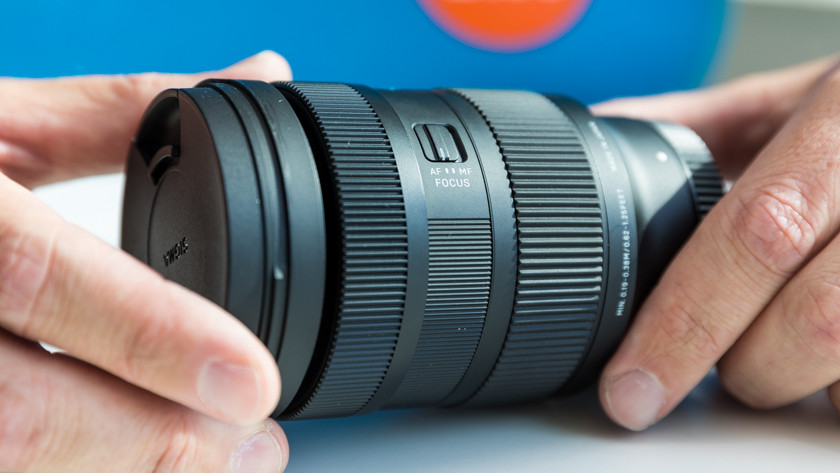
28-70mm: 470g
The 28-70mm is from the Sigma Contemporary series. Contemporary Sigma lenses are generally compact and lightweight. This lens is made of plastic instead of metal, and it weighs only 470g. The lens is more compact than the 24-70mm, which makes it easy to take with you on the go. The lens isn't completely splash proof and dustproof. The mount of the lens does protect the camera from splashes and dust.
Image quality

24-70mm: 19 elements in 15 groups
This objective consists of 19 high-grade lens elements that are divided into 15 groups. The lens elements prevent aberrations and distortions in your photos. In addition, the separate elements ensure sharpness and brightness. The multi-layered coating of the lens prevents glare and reflections caused by the sun. This combination ensures a high image quality.
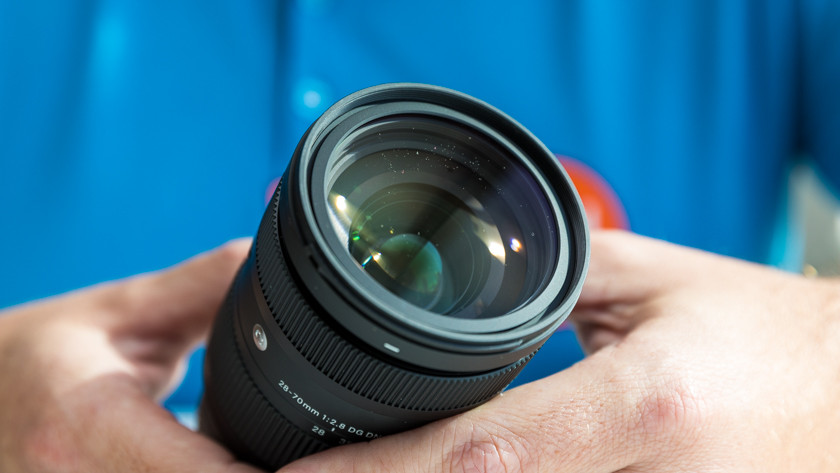
28-70mm: 16 elements in 12 groups
Just like the 24-70mm lens, the 28-70mm lens is made of high-grade Sigma lens elements. This lens has 16 elements, divided into 12 groups. Together, the lens elements prevent distortions and aberrations in your photos. The special coating prevents flare and reflections, so you can take sharp and bright photos in high quality with this lens.
Conclusion
These lens have many similarities. The big difference between the 2 lenses is the focal length. The 24-70mm lens has a larger zoom range, so you can capture tall buildings and vast landscapes more easily. This lens can also withstand weather conditions better. The 28-70mm lens is more compact and lighter. This makes it easy to take with you on the go. Both lenses have a maximum aperture of f/2.8. This allows you to use the lenses in low-light situations.




